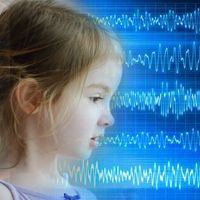Age Gap in Parents Figures in Autism Risk
A new study shows the autism risk is higher not just in older parents but in couples with a big gap in their ages. Teen mothers also have a higher risk.

Though researchers have known that older mothers and fathers have an increased risk of having a child with autism a Swedish study finds new age-based risks.
Sven Sandin, MSc, of the Karolinska Institutet in Karolinska, Sweden and colleagues in several other countries, looked at birth data for children in 5 countries.
Of more than 5.7 million children born in the study period, 30,902 had autism spectrum disorder and 10,128 had autism.
The team’s goal was to see if advancing age for fathers and mothers were independently associated with autism risk and to estimate the functional form of the association between parental age and the disorder.
The data came from registries in Denmark, Norway, Sweden, Western Australia, and Israel.
They found that the risk increased steadily as fathers got older, but in the mothers, the risk was U-shaped.
That is, it was high in older mothers, dipped to a low risk around age 30, but was also high in mothers under age 20.
The team also looked at risk in couples where one spouse was older than the other.
The researchers found that an age gap of at least 10 years was also associated with higher risk.
That was particularly true for fathers age 35 to 44 whose marital partners were at least 10 years younger and for mothers 30 to 39 whose partners were at least 10 years younger.
“In addition, among couples with fathers younger than 45 and mothers younger than 40, the relative risk increased with increasing difference in age between the parents," he said.
In discussing the findings, Sandin wrote, de novo mutations contribute to the association between paternal age and autism risk.
Advancing maternal age has also been associated with chromosomal changes and genomic modifications.
But the finding that a big age gap between parents plays a role was not explained by genetics, he noted.
“It is possible that disparately aged couples represent other socio-economic, genetic, and/or psychological characteristics that increase their risk of having children with autism spectrum disorder.
The higher risk in young mothers could be due to unknown socio-economic factors—or it could be that women with traits associated with autism, like shyness and aloofness, have children earlier. People with those personality traits might also be more likely to marry a partner much older or younger.
He noted that study limitations included sparse data on births to parents with large age gaps.
The findings “suggest that multiple mechanisms are contributing to the association between parental age and autism spectrum disorder risk,” the team concluded.